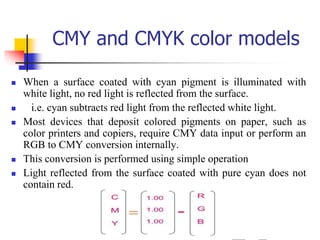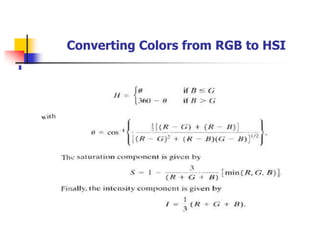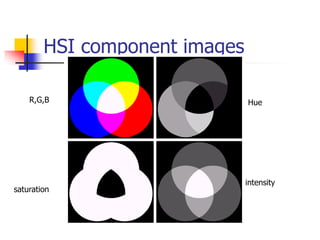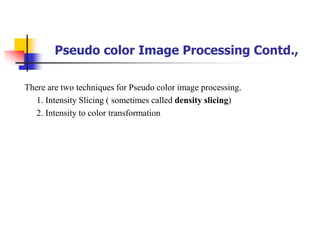Color image processing involves two main areas: full-color processing where images are acquired with a color sensor, and pseudo-color processing where monochrome intensities are assigned colors. The document then discusses color fundamentals including the visible light spectrum, how humans perceive color, primary/secondary colors, and color models like RGB, CMY, and HSI. It explains how to convert between RGB and HSI color spaces, with HSI being more intuitive for describing colors to humans. Pseudo-color processing is described as mapping gray levels to colors to enhance image details.
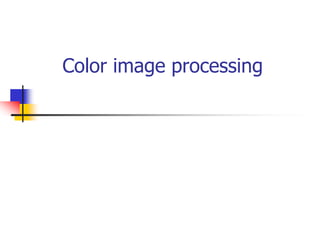
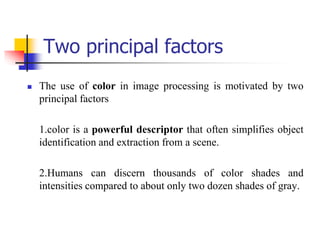
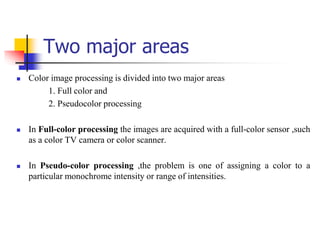

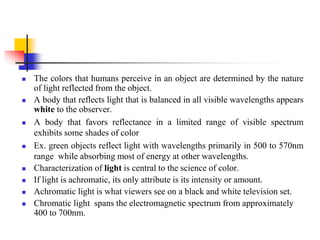
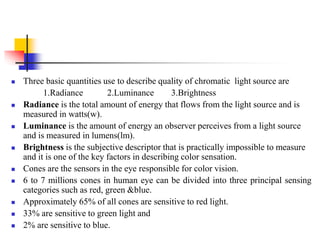


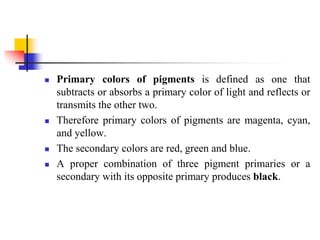
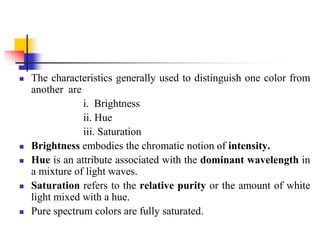

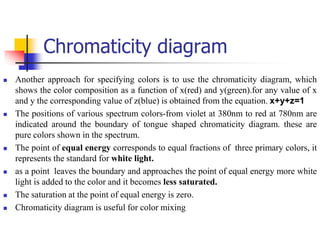

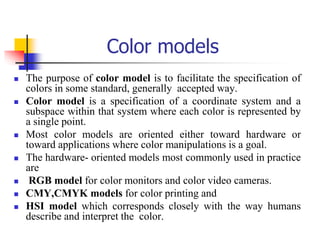
![RGB COLOR MODEL
In this model each color appears in its primary spectral components of red,
green and blue.
This model is based on cartesian coordinate system
The color subspace of interest is the cube.
All values of R,G and B are assumed to be in the range [0,1].
Images represented in the RGB color model consist of three component
images, one for each primary color. when fed into an RGB monitor these
three images combine on the phosphor screen to produce a composite color
image.
Each RGB color pixel is said to have a depth of 24 bits.
The term full-color image is used often to denote a 24-bit RGB image.](https://image.slidesharecdn.com/colorimageprocessing-240114131553-689f6ede/85/Color-image-processing-ppt-15-320.jpg)

